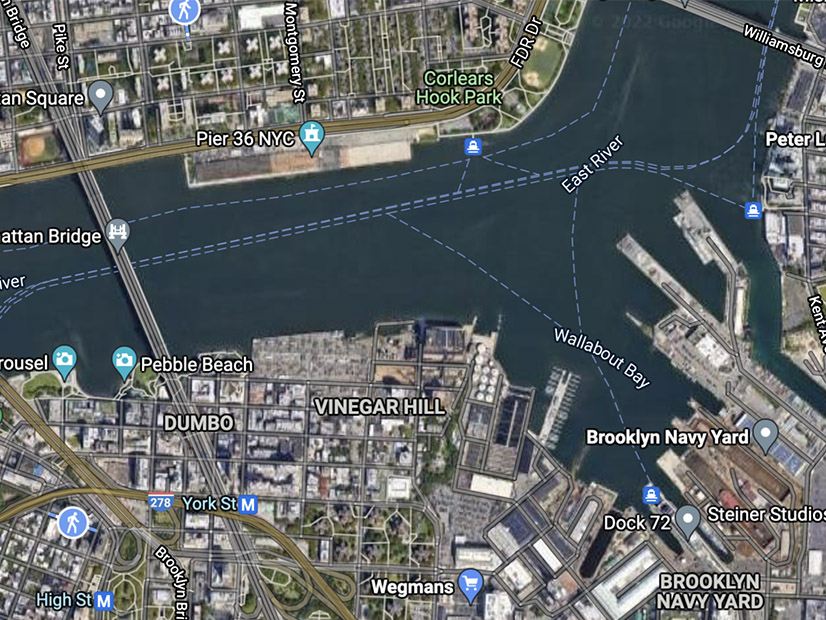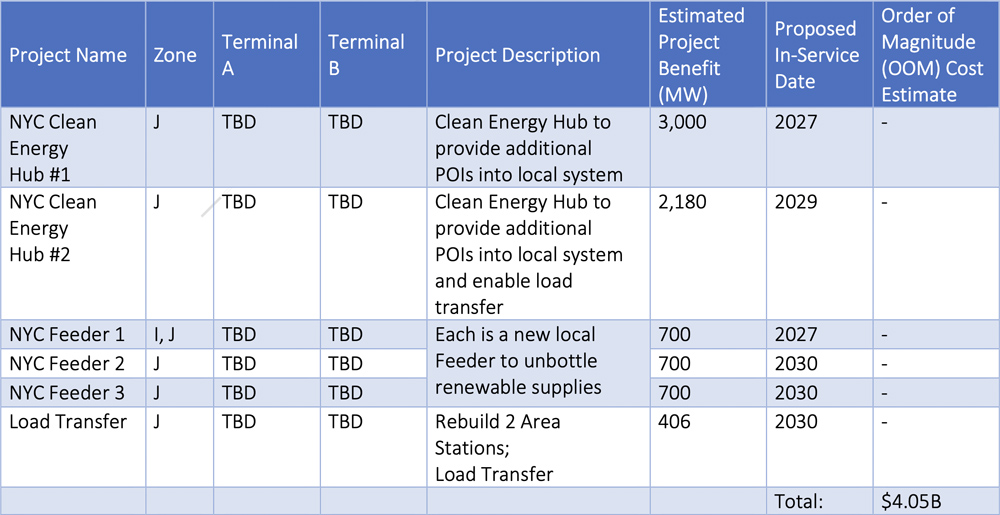
Consolidated Edison (NYSE: ED) must resolve several regulatory concerns before being authorized to build a new $4 billion substation complex in New York City dedicated to interconnecting offshore wind projects.
Those concerns took shape when the New York Public Service Commission issued a Jan. 20 order directing state solicitations for OSW proposals to require “mesh-ready” transmission plans, part of the broader effort to develop rules implementing the Climate Leadership and Community Protection Act (CLCPA), which requires that 70% of the state’s electricity generation come from renewable resources by 2030 and that generation be 100% carbon-free by 2040.
The PSC also asked Con Edison to supply detailed plans for a wind energy interconnection hub — and specifically one in lower Manhattan allowing the connection of up to 6 GW of OSW projects (Case No. 20-E-0197). (See NYPSC Mandates Meshed Offshore Tx Grids.)
“We look forward to providing more details on the benefits of these projects,” Con Edison spokesman Karl-Erik Stromsta told RTO Insider.
Changing Landscape
“Time is of the essence,” the commission said in its order, noting that the PSC and Con Edison are both aiming at moving targets in their efforts to identify the location for a substation. For example, the Rainey substation, which the state’s three-part power grid study last January identified as a good candidate to integrate OSW, has since been claimed by the Clean Path New York (CPNY) project to bring upstate solar and onshore wind into the city.
“The CPNY project is expected to carry generation associated with up to 1,300 MW of capacity, making it highly unlikely that the same substation can feasibly accommodate an additional 1,250 MW of offshore wind generation as assumed in the base case of the OSW study,” the commission said.
In March 2021 comments on the grid study, Con Edison reiterated earlier proposals for two New York City Clean Energy Hubs.
The first hub would create points of interconnection (POIs) for four 750-MW connections — or 3,000 MW total — and could be placed in commercial operation by summer 2027.

The second hub would create POIs for two new connections for about 1,500 MW total and simultaneously transfer load from three other constrained load pockets on Con Edison’s 138 kV system, relieving transmission constraints and reducing the load’s dependency on local fossil fuel power plants to maintain local system reliability. This project could be placed in commercial operation by summer 2029.
Con Edison first proposed the hubs in a local transmission and distribution report filed by all the state’s utilities in November 2020. The various utilities reported on their T&D status and proposed Phase 1 projects — traditional utility investments that address system reliability or resilience issues — and Phase 2 projects intended primarily for achieving CLCPA goals.
The PSC last April approved $800 million in cost recovery by Con Edison for three Phase 1 projects known collectively as the Transmission Reliability and Clean Energy (TRACE) projects. The projects are needed for reliability in 2023 and 2025 because of the retirement or unavailability of 399 MW of peaking generation made to comply with the state Department of Environmental Conservation’s “peaker rule,” new NOx regulations that go into effect May 1, 2023 (19-E-0065). (See NYPSC OKs $800 Million Tx Cost Recovery for Con Ed.)
Climate Resiliency
Con Edison is also collaborating with the Long Island Power Authority to consider ways to interconnect 9 GW of offshore wind. The grid study and ensuing analysis identified scenarios in which 6,000 MW of interconnections into New York City and 3,000 MW into Long Island minimized onshore transmission system upgrades and involved very limited OSW curtailments. The OSW portion of the study evaluated every New York City area and Long Island substation above 69 kV.
In addition, Con Edison identified the need to construct new feeders to redistribute the renewable energy throughout its local transmission system to both supply local loads and export to upstate load areas to prevent OSW curtailment.
The OSW analysis base case selected four POIs — with their injection capacities — in NYISO’s Zone J (NYC): Farragut (1,400 MW), Rainey (1,250 MW), Mott Haven (1,250 MW), and West 49th St. (1,200 MW). Still unresolved is whether those POIs have the physical space necessary to accommodate the upgrades for the planned injections.
Given the cost and difficulty of finding land for new electrical equipment and operations in lower Manhattan, Con Edison is proposing to build its first hub on land it already owns next to the Farragut substation on the East River in Brooklyn.
The commission is requiring all OSW proposals to include plans for high-voltage direct current (HVDC) transmission to make the best use of limited space available for cables in the Narrows and the harbor. It asked Con Edison for “a reasonable forecast” of where it will put an onshore HVDC converter station and the costs of routing an AC transmission line from there to the hub.
The commission also asked the utility to describe its measures to enhance resiliency, given that the hub would be “geographically concentrating, at a minimum, 3,000 MW of offshore wind interconnections at a single substation that would sit directly adjacent to another large substation (Farragut).”
Specifically, the commission asked for further information on how Con Edison will mitigate the risk of storm damage to the co-located substations; how the substations can be protected from exposure to sea-level rise and static or dynamic flooding; and how the utility will comply with all applicable reliability criteria, including NERC standards for “extreme contingencies” as specified in NERC Standard TPL-001-4.
The PSC also wants the utility to document how it is considering use of advanced technologies in its analysis.
The commission noted comments by LS Power and NextEra Energy Transmission New York in response to the utility study that said despite sufficient detail for regulatory action, Con Edison’s hub proposal should nonetheless be referred to the NYISO public policy planning process because it cannot be considered a local transmission project.
“While the commission expects to address procedural matters following its review of the additional information, the availability of the NYISO process should not interfere with our broad planning authority and review of the options for establishing cost-effective POIs in service of our overarching goal of meeting CLCPA mandates at the least cost to ratepayers,” the commission said in its January 20 order.
The PSC in October 2020 designated the New York Power Authority’s $1 billion Northern New York transmission line as a high priority for meeting the state’s renewable energy goals, bypassing NYISO’s public policy transmission planning process and adopting criteria for identifying other such “priority transmission projects.” (See NYPSC OKs NYPA Project, ‘Priority’ Tx Criteria.)


